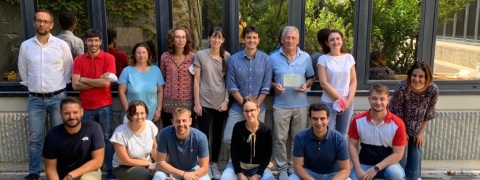Meet the Team: UNI VPM

May 25, 2023
What are your main tasks in the project?
UNIVPM is leader of two case studies: In case study 4 (Innovative landfill leachate treatment for near zero pollution discharge to enable resource recovery from wastewater treatment plants), we are working with advanced and innovative technologies to remove and destroy PFAS from landfill leachate. This is a liquid waste that represents one of the most critical sources of PFAS contamination for the environment. In case study 5 (Removal of PFAS from dredged sediments for material recycling), we are studying the fate of PFAS during washing operations and treatments of dredged sediments, which can then be reused as construction material in road embankments.
What are your goals?
One of our objectives is to test and develop innovative technological solutions to promote the recovery of pollution-free water and material. We also want to encourage a circular economy of recovered resources. Therefore, we are testing on the one hand membrane technologies to completely remove PFAS from liquid leachate to avoid municipal wastewater contamination. This assures the possibility to perform water reuse. Pyrolysis treatment of sewage sludge will provide indications about the possibility to produce PFAS-free fertilizers for agriculture. In case study 5, on the other hand, we are testing different solutions to allow a safe reuse of dredged sediment avoiding the spreading of toxic compounds in the environment.
What do you particularly like about the project?
What we like about PROMISCES is that the project doesn’t only investigate solutions for remediating hazardous chemicals. It also provides guidelines to correctly implement circular economy practices. In this way, PROMISCES will produce information for the protection of human health and the environment avoiding the uncontrolled diffusion of persistent and mobile chemicals.
How does your work help the general public?
Our work aims to develop innovative technological approaches to avoid the spreading of PFAS in the environment allowing the reuse of material for the construction sector and the reuse of water and sludge for agriculture. Hence, our work can not only promote the transfer of novel knowledge to avoid the diffusion of hazardous substances into the environment. It can also promote the selection of appropriate technologies for the implementation of circular economy and bioeconomy models in the European Countries.
